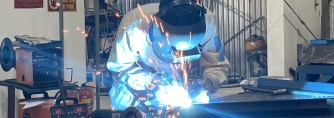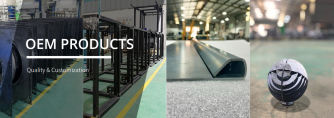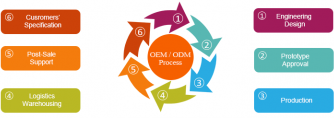
Metric and inch thread pitches are commonly used in fasteners, but what sets them apart? Explore the differences, advantages, and applications of metric and inch thread pitches in this comprehensive guide.
Thread pitches play a crucial role in fastener selection and assembly. Two widely used systems for thread pitches are the metric and inch systems. While both serve the purpose of connecting components, they differ in their measurement standards and applications. In this in-depth guide, we will explore the differences between metric and inch thread pitches, their advantages, and the industries where each system finds its primary use. By understanding these differences, you'll be equipped with the knowledge to make informed decisions when selecting the appropriate thread pitch for your specific needs.
Differences and Considerations
When comparing metric thread pitches and inch thread pitches, several key differences and considerations should be taken into account.
Firstly, the measurement standards differ between the two systems. Metric thread pitches are based on the metric measurement system, using millimeters as the unit of measurement. In contrast, inch thread pitches rely on the imperial measurement system, utilizing inches. This distinction in measurement units is fundamental to understanding and working with the two systems.
Another difference lies in the way thread pitches are designated. Metric thread pitches are identified by the letter "M" followed by a number and decimal, such as M6x1.0 or M10x1.5, where the number represents the thread diameter and the decimal denotes the pitch value. On the other hand, inch thread pitches are designated using fractions and numbers indicating threads per inch, such as 1/4-20 or 3/8-16, where the fraction represents the thread diameter and the number indicates the number of threads per inch.
Pitch variations also vary between metric and inch thread pitches. Metric thread pitches offer finer pitch options, allowing for more precise fastening. This characteristic makes them well-suited for applications that require high levels of accuracy and control. In contrast, inch thread pitches generally have coarser pitch options, which are more suitable for general-purpose applications where precision is not as critical.
Compatibility is an important consideration. Metric thread pitches are compatible with the International System of Units (SI) and are widely used in industries such as automotive, machinery, aerospace, and electronics. Inch thread pitches, on the other hand, are compatible with existing inch-based systems and equipment, making them prevalent in industries like construction, plumbing, woodworking, and older equipment. Regional preferences and historical usage also play a role in determining the prevalent choice of thread pitch system in different industries and regions.
Table: Metric Thread Pitches vs. Inch Thread Pitches
|
Metric Thread Pitches |
Inch Thread Pitches |
|
|
Measurement System |
Based on the metric measurement system (millimeters). |
Based on the imperial measurement system (inches). |
|
Designation |
Designated by the letter "M" followed by a number and decimal. |
Designated by fractions and numbers indicating threads per inch. |
|
Examples |
M6x1.0, M10x1.5. |
1/4-20, 3/8-16. |
|
Pitch Options |
Finer pitch options available, allowing for precise fastening. |
Coarser pitch options, suitable for general-purpose applications. |
|
Strength-to-Size Ratio |
Higher strength-to-size ratio, offering robust connections. |
Lower strength-to-size ratio compared to metric thread pitches. |
|
Compatibility |
Compatible with the International System of Units (SI). |
Compatible with existing inch-based systems and equipment. |
|
Conversion Ease |
Easy conversion between metric sizes due to standardized systems. |
May require conversion calculations or use of conversion charts. |
While metric thread pitches may offer finer pitch options and compatibility with global standards, inch thread pitches continue to find their primary use in specific industries and regions. The historical usage and established infrastructure associated with inch thread pitches make them a preferred choice for applications where the imperial measurement system is deeply rooted.
Conversion Methods
Converting between metric and inch thread pitches may be necessary in some situations. Fortunately, there are practical methods available to facilitate this conversion.
Conversion tables, both in print and online, provide a quick reference for converting between metric and inch thread pitches. These tables typically list the corresponding thread pitch values for different thread diameters in both systems, aiding in the conversion process.
Formulas can also be used to convert between metric and inch thread pitches. These formulas involve mathematical calculations that consider the relationship between thread diameter and pitch values in each system. However, it is essential to ensure the accuracy of the formulas and double-check the results to avoid errors.
Online resources, including calculators and conversion tools, offer convenience and ease of use. These tools often allow users to input the thread diameter or pitch value in one system and provide the corresponding value in the other system.
When converting thread pitches, it is important to select appropriate replacement fasteners. It may be necessary to source fasteners that match the desired thread pitch system, or alternatively, use thread adapters or inserts to adapt the existing fasteners to the desired system. Consulting with experts or referring to industry standards can help ensure the proper selection of replacement fasteners.
In the realm of sheet metal fabrication, the meticulous selection of an optimal thread pitch holds paramount importance. It is imperative to meticulously consider a multitude of factors, including design requirements, equipment compatibility, industry standards, and regional preferences. By demonstrating an in-depth understanding of the differences, advantages, and applications inherent in metric and inch thread pitches, sheet metal professionals wield the power to make judicious decisions that guarantee unwavering fastening integrity and unwavering reliability throughout their projects.
- Revamp Your Ute Storage with Smart Vietnam’s Modular Truck Solutions
- Give Your Truck a Boost with Smart Vietnam's Tough Headache Racks
- Boost Your Storage with Smart Vietnam's Tough Modular Stainless Steel Truck Cap
- Revolutionizing the Truck Body Building Industry with Smart Vietnam's Toolboxes, Canopies, and Trays
- Why Smart Vietnam Chooses Marine Grade Aluminum 5052 and 5083 for Manufactured Toolboxes, Canopies, and Trays of UTE
- The Symbiotic Relationship Between Canopies, Toolboxes, and Trays: Enhancing Utility with Smart Vietnam
- UTEs in the Automotive Industry and Smart Vietnam's Toolbox Manufacturing Capabilities
- Enhance Your Workspace with Smart Vietnam's Rolling Tool Chest/Tool Box with 3 Drawers and Padded Mechanic Stool Creeper Seat
- Optimize Your Storage with Smart Vietnam’s Confote 39 Inch Heavy Duty Aluminum RV Trailer Tongue Toolbox


















_cr_334x118.png)




















-min_cr_334x118.jpg)



















